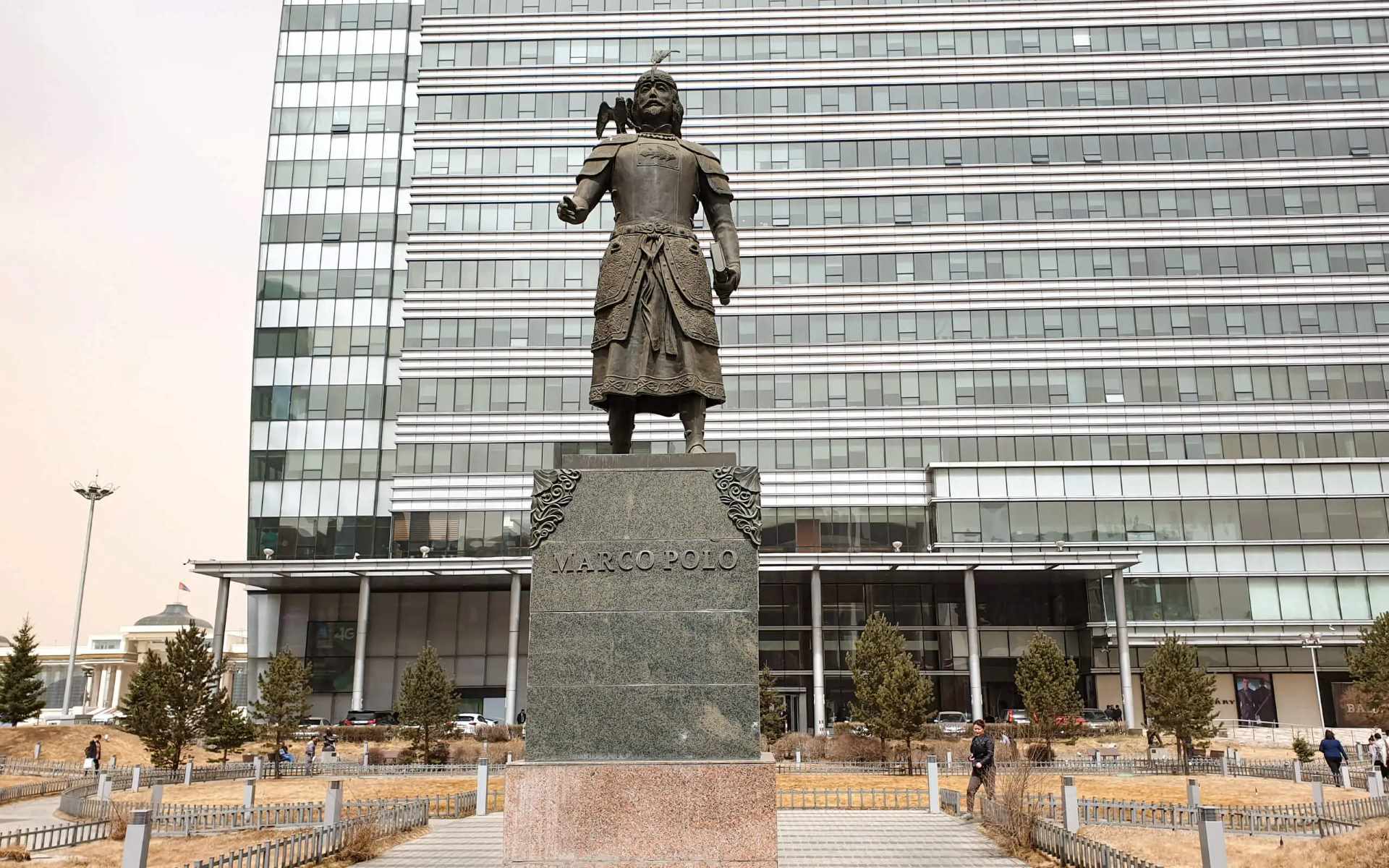
Did you know that the Marco Polo Statue stands as a tribute to one of history's greatest explorers? This statue, located in Korčula, Croatia, celebrates Marco Polo's adventurous spirit and his incredible journeys. Born in Venice, Polo traveled extensively through Asia, documenting his experiences in "The Travels of Marco Polo." The statue captures his essence, reminding us of his contributions to world exploration. Crafted with intricate details, it showcases Polo in traditional attire, holding a map and a compass. Visitors from around the globe come to admire this monument, reflecting on the rich history and cultural exchanges Polo's travels inspired.
The Marco Polo Statue: A Historical Marvel
The Marco Polo Statue stands as a tribute to one of history's most famous explorers. This statue, located in various parts of the world, captures the essence of Marco Polo's adventurous spirit. Let's dive into some fascinating facts about this iconic monument.
-
The statue commemorates Marco Polo, the Venetian merchant and explorer who traveled through Asia in the 13th century. His travels were documented in "The Travels of Marco Polo," which inspired many future explorers.
-
There are multiple Marco Polo statues around the world, including in Venice, Italy, and Korčula, Croatia. Each statue reflects the local culture and artistic style, making each one unique.
-
The statue in Venice is located near the Rialto Bridge, one of the city's most famous landmarks. This location is significant because Venice was Marco Polo's hometown.
-
In Korčula, Croatia, the statue is situated in the old town, believed by some to be Marco Polo's birthplace. This claim is disputed, but the statue remains a popular tourist attraction.
Design and Symbolism
The design of the Marco Polo Statue is rich with symbolism, reflecting the explorer's life and achievements. Here are some intriguing details about its design.
-
The statue often depicts Marco Polo holding a book or a scroll, symbolizing his detailed travel accounts. These writings provided Europeans with one of the first comprehensive looks at Asia.
-
Some statues feature Marco Polo with a compass or an astrolabe, tools essential for navigation during his time. These instruments highlight his role in advancing geographical knowledge.
-
The attire of the statue varies, often showing Marco Polo in traditional Venetian clothing or Mongolian robes. This attire represents his journey from Venice to the court of Kublai Khan in China.
-
Many statues include a globe or a map at Marco Polo's feet, emphasizing his contributions to world exploration. These elements remind viewers of the vast distances he traveled.
Artistic Contributions
Artists from different periods have contributed to the creation and interpretation of the Marco Polo Statue. Their work reflects the evolving appreciation of Marco Polo's legacy.
-
The statue in Venice was created by the Italian sculptor Antonio Canova in the early 19th century. Canova is renowned for his neoclassical style, which emphasizes grace and simplicity.
-
In Korčula, the statue was crafted by the Croatian sculptor Frano Kršinić in the mid-20th century. Kršinić's work is known for its realism and attention to detail.
-
Modern interpretations of the statue can be found in places like China and the United States. These statues often incorporate contemporary artistic styles and materials.
-
Some statues are made from bronze, while others are carved from marble or stone. The choice of material often reflects the local artistic traditions and resources.
Cultural Impact
The Marco Polo Statue has had a significant cultural impact, inspiring people to learn more about the explorer and his journeys. Here are some ways it has influenced culture.
-
The statue serves as an educational tool, teaching visitors about Marco Polo's travels and their historical context. Many statues are accompanied by plaques or informational displays.
-
It has become a popular subject for photographers and artists, who capture the statue in various lights and angles. These images help spread awareness of Marco Polo's legacy.
-
The statue is often featured in travel guides and brochures, attracting tourists to its locations. This boosts local economies and promotes cultural exchange.
-
In some places, the statue is part of larger exhibitions or museums dedicated to Marco Polo. These institutions provide a deeper understanding of his life and times.
Fun Facts
Beyond its historical and cultural significance, the Marco Polo Statue has some fun and quirky aspects. Here are a few light-hearted facts.
-
In Venice, the statue is a popular meeting spot for locals and tourists alike. Its central location makes it an easy landmark to find.
-
Some statues have been the subject of urban legends and myths. For example, there's a story that touching the statue's foot brings good luck.
-
The statue in Korčula is often decorated with flowers and wreaths during local festivals. This tradition honors Marco Polo's contributions to the town's heritage.
-
In some cities, the statue is illuminated at night, creating a striking visual effect. This lighting highlights the statue's details and makes it a focal point of evening strolls.
Modern Relevance
Even today, the Marco Polo Statue remains relevant, symbolizing the spirit of exploration and curiosity. Here are some ways it continues to inspire.
-
The statue is often used in educational programs to teach students about geography and history. Its presence makes learning more engaging and tangible.
-
It has inspired modern explorers and adventurers to follow in Marco Polo's footsteps. Many have retraced his routes, documenting their journeys for new audiences.
-
The statue is a reminder of the importance of cultural exchange and understanding. Marco Polo's travels introduced Europeans to the rich cultures of Asia.
-
In a globalized world, the statue symbolizes the interconnectedness of different regions and peoples. It encourages us to explore, learn, and appreciate the diversity of our world.
The Final Word on the Marco Polo Statue
The Marco Polo Statue stands as a testament to the adventurous spirit of one of history's greatest explorers. Located in Venice, this statue captures the essence of Polo's journeys and his impact on world history. Crafted with intricate detail, it draws visitors from around the globe, eager to learn more about Polo's travels and contributions.
The statue not only honors Marco Polo but also serves as a reminder of the importance of exploration and cultural exchange. Its presence in Venice, a city known for its rich history and connection to Polo, makes it a must-see for history buffs and tourists alike.
Whether you're a fan of history or just love beautiful sculptures, the Marco Polo Statue offers a glimpse into the past and inspires future adventures. So next time you're in Venice, make sure to check it out!
Was this page helpful?
Our commitment to delivering trustworthy and engaging content is at the heart of what we do. Each fact on our site is contributed by real users like you, bringing a wealth of diverse insights and information. To ensure the highest standards of accuracy and reliability, our dedicated editors meticulously review each submission. This process guarantees that the facts we share are not only fascinating but also credible. Trust in our commitment to quality and authenticity as you explore and learn with us.


